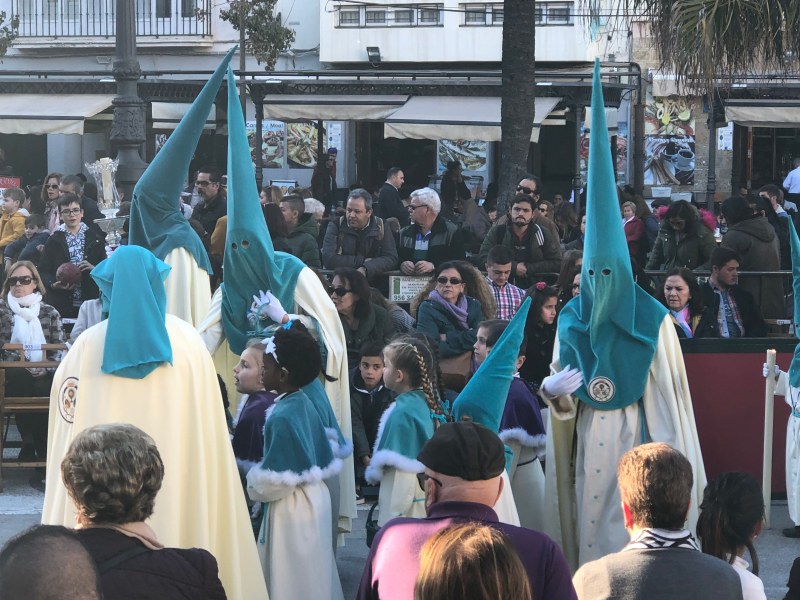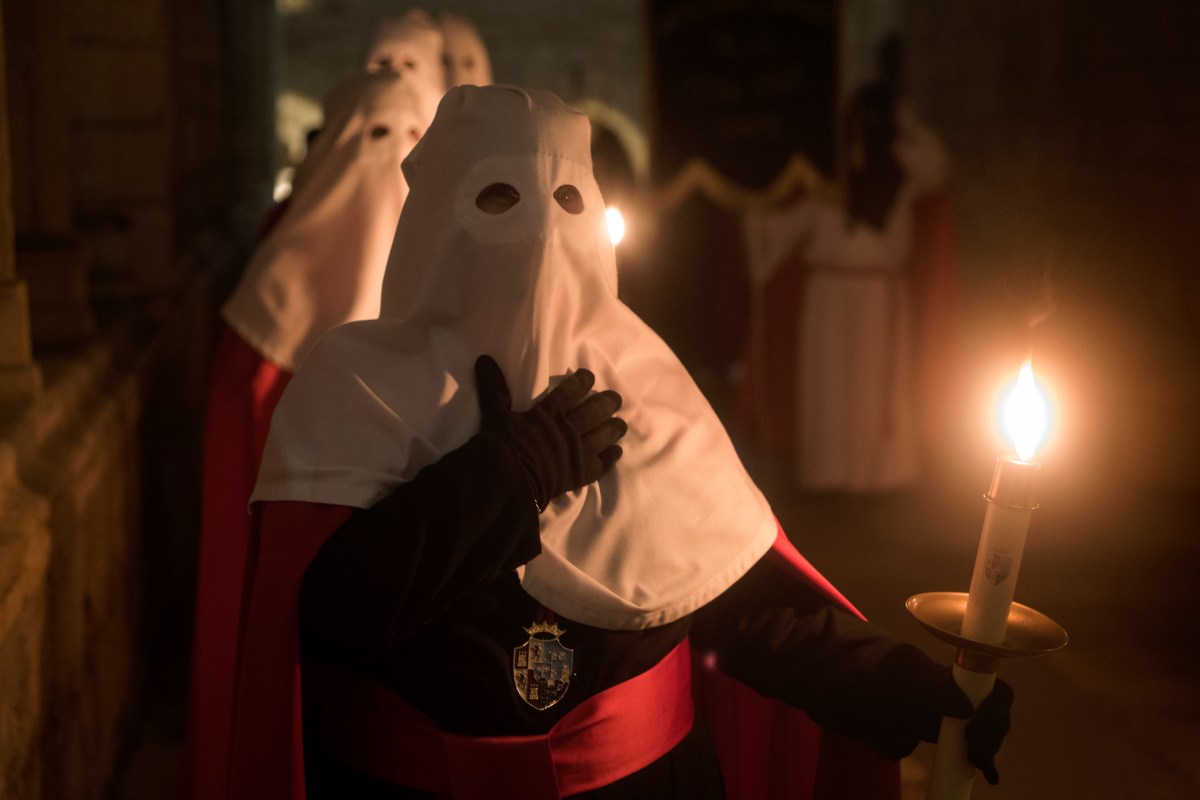CADIZ, Spain – Growing up in the American South did not prepare me for seeing adorable, knitted figurines like this in storefronts:
Knitted Semana Santa figurines in a Cadiz, Spain, storefront.(Lee Ferran)Those were just the prelude to watching seemingly endless processions of people young and old wearing all colors of robes, cloth masks and the pointed hood that — especially when you spot one in all white — are woven so tightly in American cultural history to the white supremacist Ku Klux Klan.
Possessions during Semana Santa in Cadiz, Spain. (Lee Ferran)But that’s not fair because here the robes are spiritual, not at all sinister. More importantly, they were here first. Way first.
The hoods are a distinctive part of Spain’s Semana Santa, or Holy Week, a massive celebration that leads up to Easter and a tradition that dates back to the Middle Ages.
In several Spanish cities each of the Catholic brotherhoods, of which there can be many, don robes of their own color and hoist tremendous, ornate scenes depicting parts of the Easter story to carry through the city.
Hundreds of wooden chairs are set up along the procession route and families come out early to get good seats. As the hooded figures pass, children often step forward to ask a marcher to drip some wax on a small ball, in the child’s attempt to build up an abstract, colorful globe.
During the day large bands follow the statues, billowing powerful, regal melodies. Other processions, like one witnessed at night, pass by eerily in silence in the candlelight.
A Semana Santa night procession in Cadiz, Spain. (Lee Ferran)For what it’s worth, while KKK members had worn some form of hoods back in the 1800s, the Klan didn’t widely adopt the standard white hood with the pointed hat until they were portrayed that way the 1905 film “Birth of a Nation,” according to a report by The New Republic. The magazine said that one theory maintains that a costume designer may have gotten the idea from “confraternal processions” she saw “in the streets of Europe.”
Back in Cadiz, after watching several processions, as well as the related trappings around the city, it’s been difficult to disassociate the hoods from the hate they represent more than 4,000 miles and an ocean away.
But each time two young girls walk by a cafe, smiling and chatting happily with dark blue robes on and their pointed hoods under their arms, on their way to do their part in the centuries-old tradition, it gets a little easier.

This article was featured in the InsideHook newsletter. Sign up now.
























